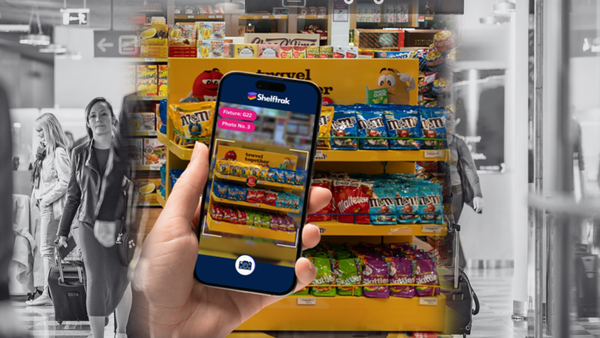Optimising Retail Execution in Grocery & Multi-Sector Chains
Managing in-store execution across hundreds of grocery and multi-sector retail stores is no small feat. Learn strategies and tech tools to optimise retail execution at scale and ensure every shelf and display drives sales.

Running a promotion in one store is easy; rolling it out flawlessly to a hundred stores is the real challenge. Grocery and multi-sector retail chains face this every day – from ensuring planogram compliance in each outlet to keeping promotional displays fresh and stock levels optimal. In a world where a single out-of-stock or sloppy display can turn shoppers toward a competitor, retail execution at scale has become a critical discipline. In this article, we explore how brands and retailers can optimise in-store execution across many locations, leveraging best practices and modern tools to achieve consistency and drive sales growth.
The Scale of the Challenge
When you operate dozens or hundreds of stores, maintaining high execution standards everywhere is daunting. Different store sizes, varied staff experience, and regional execution “drift” mean that without careful oversight, a plan that looks perfect on paper can unravel on the ground. In grocery chains, for instance, it’s common to find that a new product supposed to be on an eye-level shelf ends up near the floor in some locations, or a secondary display gets forgotten in the stockroom in others. These inconsistencies lead to lost sales. In fact, one survey of retail decision-makers found 93% of them cite planogram compliance as a significant challenge.
Moreover, traditional auditing methods (periodic store walks by supervisors or sales reps) catch issues infrequently. By the time a problem is found – like a promotional aisle end not set up – the promotion period may be half over. The cost of these execution gaps across a large chain is huge: missed revenue, wasted trade marketing spend, and uneven customer experiences.
Strategies and Tools for Consistency
Leading brands and retailers are tackling this by combining clear processes with technology. A foundational step is establishing a “Perfect Store” program – a set of KPIs and visual standards for every store to hit. This might include targets like: all scheduled promotions on display from day 1, planogram compliance above 95%, out-of-stocks below 2%, etc. Having these benchmarks is important, but measuring them is another matter.
This is where modern retail execution tracking tools come in. Instead of relying purely on manager eyeballs, chains are deploying solutions like Shelftrak to monitor execution remotely. Field teams or store staff can capture photos of shelves and displays through a mobile app, feeding into an AI that checks compliance in minutes. Dashboards then highlight which stores are falling short of the Perfect Store criteria.
One global beauty retailer, for example, saw immediate benefits from this approach. “Since implementing Shelftrak, we’ve uncovered new opportunities for cross-promotions, and feedback from our regional teams has been overwhelmingly positive,” noted a global accounts director. When every store manager can see their execution score (and how it compares to peers), it creates healthy accountability and competition to maintain standards.
Driving Sales through Better Execution
The ultimate goal of optimising execution is to lift sales and shopper satisfaction. When a chain achieves near-uniform compliance:
- Customers find the products and promotions they’re expecting (leading to higher basket sizes).
- Fewer sales are lost to out-of-stocks or missing price labels.
- New product launches get the exposure they’re supposed to, resulting in faster uptake.
For instance, a multi-sector retailer found that stores with top-tier execution scores (monitored via an app) consistently outperformed lower-scoring stores in weekly sales – in some cases by 10–15%. The difference came from factors like fuller shelves (higher on-shelf availability) and more attractive displays. Those may sound like small details, but at scale they compound into a significant revenue difference.
Of course, technology isn’t a silver bullet. Companies also invest in training store staff and incentivising execution. Many retailers have started tying store bonuses or supplier trade incentives to execution metrics (e.g., a payout if 98% planogram compliance is sustained). This, combined with real-time tracking, creates an execution-focused culture.
Conclusion: Consistency is the Competitive Edge
In grocery and multi-sector retail, the shopper’s trust is earned through consistency – finding their favorite cereal in stock, seeing that exciting new beverage promotion in every store they visit. Achieving this consistency across a vast network isn’t easy, but it’s increasingly within reach thanks to better tracking and analytics. By setting clear standards (the “what” of perfect execution) and using tools and training to uphold them (the “how”), retailers and brands turn execution from a headache into a strength.
Shelftrak and similar platforms play a key role by providing an extra set of eyes (and a brain) in every store, every day. They surface problems so they can be fixed fast, and they provide leadership with a macro view of execution health. The result: fewer unpleasant surprises and more delighted customers. In a segment where margins are tight and products often similar, execution excellence can be the differentiator that keeps shoppers loyal and sales growing.
Striving for flawless execution at scale?
Consider leveraging solutions like Shelftrak to gain visibility into every shelf and display. With the right approach, even a network of hundreds of stores can deliver a uniformly great experience – and reap the rewards in revenue. Book a demo if you’d like to see how technology can support your execution goals.





